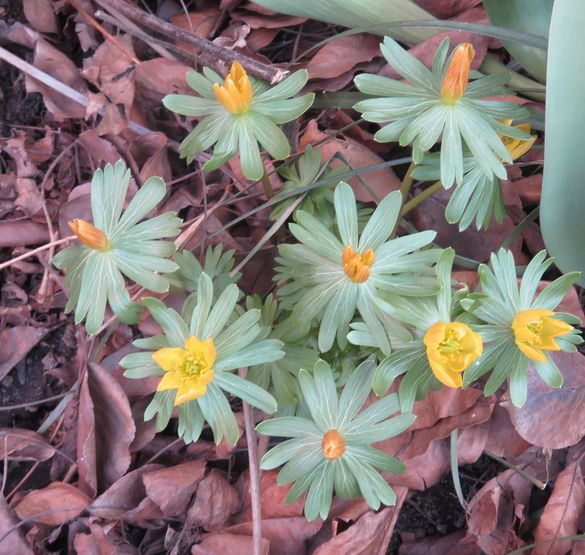WINTER ACONITE (Eranthis hyemalis)
|
Winter Aconite, Eranthis hyemalis / Pronunciation: (eer-RAN-this hy-EH-may-liss)
Bulb, Ranunculaceae (buttercup family) Hardiness: Zone: 3 - 7 Sun: Full sun to part shade. Blooms March-April. All parts of this plant are poisonous. Cultivation/Fertilizer/Soil and pH/Watering: organically rich, medium moisture, well-drained soils. Best in locations that enjoy full sun at the time of bloom, but acquire increasing shade as overhead trees leaf out. Needs consistent moisture year-round (albeit less in summer and fall) even though plants go dormant by late spring. Do not let dry out between waterings. Pests/Diseases: No serious insect or disease problems. Planting/Dividing/Transplanting: Plant tubers 2-3" deep and 3" apart in late summer to early fall. Soak tubers overnight before planting. May self-seed and naturalize over time in optimum growing conditions. Aconites can be grown from seedlings. Germination can take a long time (up to a year), so be patient! Keep the seeds at a temperature of 18 to 20°C. Once they have sprouted plant them in a shady place about 10 cm apart. Best left undisturbed Eranthus hyemalis, winter aconite, is native to southern Europe (France to Bulgaria). It is a late winter bloomer (before crocus) that features cup-shaped, upward-facing, bright yellow, butter-cup like flowers on stalks to 3-4” tall. Bright yellow cup-shaped flowers appear in late winter or early spring. A “jester’s collar” of green bracts surround the base of each flower. Green leaves appear at ground level after the flowers fade. A true harbinger of spring, these rugged plants often send their shoots up through snow. Genus name comes from the Greek words er meaning spring and anthos meaning a flower for its very early flowering. |

